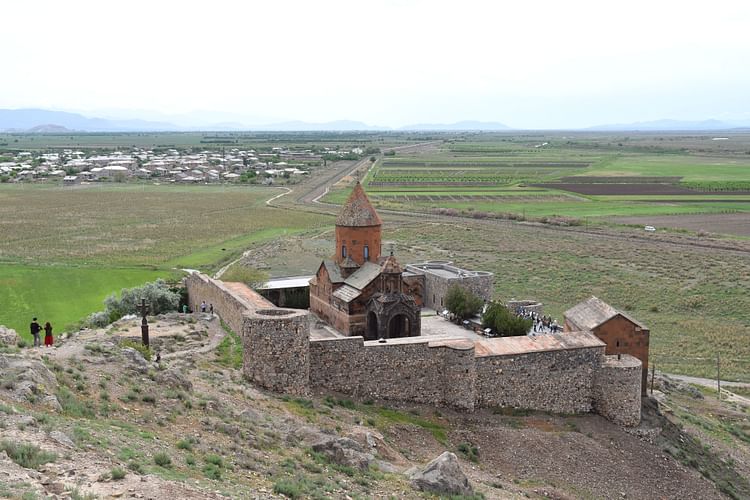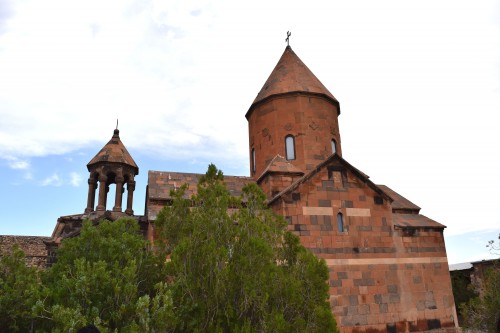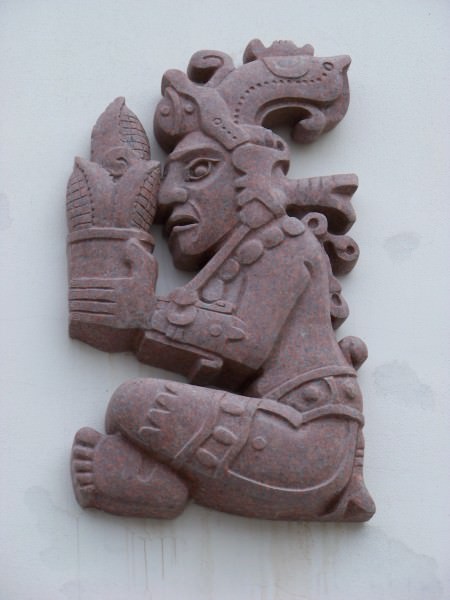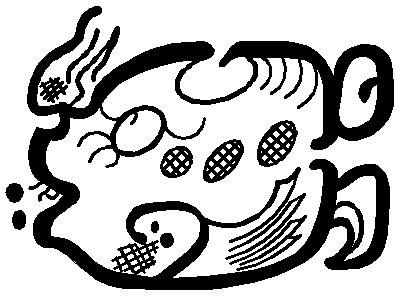Khor Virap › Maya Food & Agriculture » Origins and History
Articles and Definitions › Contents
- Khor Virap › Ancient History
- Maya Food & Agriculture › Antique Origins
Ancient civilizations › Historical places, and their characters
Khor Virap › Ancient History
Definition and Origins

Khor Virap is a monastery located in Armenia that was first established in 642 CE. Its name is derived from "virap nerk'in," which means "deep dungeon" in Armenian. Khor Virap is one of the most sacred and visited sites in Armenia primarily due to the legend of Saint Gregory the Illuminator who was imprisoned for 13 years in Khor Virap's dungeon before succeeding in the conversion of King Tiridates (Trdat) the Great to Christianity in the first decades of the 4th century CE. During the Middle Ages, Khor Virap was a center of education and learning, and despite a colossal earthquake in 1679 CE, it remains a site of pilgrimage and immense cultural interest to Armenians today.
The monastery consists of the St. Gevorg Chapel, the St. Astvatsatsin Chapel, a large courtyard, and fortified walls. Khor Virap is set upon a chain of hills in the Ararat Plain in Armenia's Ararat Province. The monastery affords spectacular views of Mount Ararat and the present-day Turkish border, which is delineated by the Aras River. Khor Virap is additionally within sight of the ruins of the ancient Armenian capital of Artashat, 16 km (10 mi) from the ancient city of Dvin, and 43 km (27 mi) of the modern Armenian capital, Yerevan.
SAINT GREGORY THE ILLUMINATOR & KHOR VIRAP
Khor Virap's importance in Armenian folklore, history, and Christianity is tied to the figure of Saint Gregory the Illuminator (c. 239 - c. 330 CE). Much of what we know about him comes from a biography dating to c. 460 CE and the more or less contemporary History of the Armenians by the writer and historian Agathangelos.
Gregory (or originally Grigor Lusavorich) was born in Roman Cappadocia and belonged to a noble family with strong ties to the Sasanian Empire of ancient Persia (224-651 CE). Raised as a Christian and educated in Greek, Gregory rejected paganism in Armenia, refusing to participate in rituals and ceremonial court functions that offended his Christian sensibilities.Tiridates the Great (Trdat III or IV), in an act of anger, tortured and imprisoned Gregory in a dungeon in Khor Virap. Gregory languished in prison for 13 years, surviving thanks to the generosity of local peasants - particularly poor Christian women - who provided him with food and clothes.

Saint Gregory the Illuminator
Serendipitously, Gregory was rescued by Tiridates' sister Princess Khosrovidukht. Curiously, she is also well-known in Armenia for having saved the Temple of Garni from destruction. In a dream, she saw that Gregory was the only man who could save her brother from madness and other debilitating ailments. Legend has it that Gregory was released from Khor Virap, and he shortly thereafter cured the king from his unusual symptoms. Gregory is widely credited with converting Tiridates the Great to Christianity, officially establishing the Armenian Apostolic Church, and spreading the Christian religion throughout Armenia and the Caucasus. Saint Gregory the Illuminator was also the first bishop of the Armenian church, and he is thus the patron saint of Armenia.
HISTORY & ARCHITECTURE
A pagan temple was once located on the site that is now occupied by Khor Virap in ancient times. Archaeologists believe that it was dedicated to Anahit, the Armenian goddess of fertility, healing, and wisdom, and several artifacts unearthed from the former temple are now housed in the British Museum. The area around Khor Virap and the ancient city of Artashat was the locus of resistance against the Persian Sassanian Empire ’s efforts to force Zoroastrianism upon the Armenian populace during the rebellion of Vartan (or Vardan) Mamikonian (c. 387-451 CE) in the 450s CE.
THE ST. GEVORG CHAPEL WAS BUILT AT KHOR VIRAP AS PART OF AN AMBITIOUS BUILDING PROGRAM TO CONSOLIDATE NERSES' POWER & INFLUENCE IN THE REGION.
On the orders of Catholicos Nerses III “the Builder” (r. 641-661 CE), a Christian chapel, the St. Gevorg Chapel, was built at Khor Virap around the year 642 CE as part of an ambitious building program to consolidate Nerses' power and influence in the region as the Muslim Arab armies began their invasions of Armenia. Nerses III had been elected as the Catholicos of the Armenian Apostolic Church around the year 640 CE just as the Arabs arrived in Armenia, and during this era, the Armenian Catholicos - the head of the Armenian Apostolic Church - held both temporal and spiritual power over the Armenian people.Nerses III, therefore, exercised and wielded considerable political might. It should be noted that Nerses III was additionally responsible for the construction of the Zvartnots Cathedral - this structure lies 47 km (29 mi) northwest of Khor Virap - which was built at the same time as the St. Gevorg Chapel.
Nerses III wished to honor the memory of Saint Gregory the Illuminator, as he was a key figure in Armenian folklore and history, and tie the name of the saint to his own through the construction and patronage of the chapel. According to the medieval histories, Nerses III was even buried at Khor Virap in close proximity to the sacred relics of Saint Gregory the Illuminator. The supposed pit where Saint Gregory the Illuminator was incarcerated still exists, located some 60 m (200 ft) below the St. Gevorg Chapel, and is accessible by a metal ladder. The room is circular but only about 4 m (14 ft) wide. Unlike most Armenian churches, which are positioned on an east-west axis, the St. Gevorg Chapel is has a northwest-southeast orientation, just like the pagan Temple of Garni. The St. Gevorg Chapel has been rebuilt over the centuries due to constant invasion and countless earthquakes.

View of St. Astvatsatsin Church at Khor Virap Monastery
In 1662 CE, a larger chapel, the St. Astvatsatsin Chapel, was constructed during the period that Armenia was under the control of the Persian Safavid Empire (1501-1736 CE). An earlier church had existed on the same spot, but it was destroyed during one the invasions of Armenia led by Timur (r. 1370-1405 CE) in the late 14th century CE. That church was in turn built upon the ruins of the pagan temple dedicated to Anahit as noted above. St. Astvatsatsin distinguishes itself from other Armenian churches by virtue of its elongated structural design: it is composed of a domed long hall with two annexes on both sides of the apse. This stands in direct contrast to most medieval Armenian churches, which have a more centralized design of a domed cruciform and four corner annexes. Restored in 1939, 1949, 1957, and 2000-2001 CE, St. Astvatsatsin remains a functioning church and thus receives many worshippers every year.
This article was made possible with generous support from the National Association for Armenian Studies and Researchand the Knights of Vartan Fund for Armenian Studies.
Maya Food & Agriculture › Antique Origins
Ancient Civilizations
For the Maya, reliable food production was so important to their well-being that they closely linked the agricultural cycle to astronomy and religion. Important rituals and ceremonies were held in honour of specialised workers; from beekeepers to fishermen, and maize, the all-important Mesoamerican staple, even had its own god. An agricultural society, 90% of the Maya population were involved in farming. Management of land and natural resources brought a more dependable harvest and varied diet, enabling economic growth. This allowed for the flourishing of Maya culture but eventual over-exploitation, an ever-increasing population, and protracted periods of drought may have been factors in the ultimate collapse of the Maya civilization.

Yum Caax
THE MAIZE GOD
One of the most important Maya deities, perhaps even the most important, was the 'Young Maize God'. Typically portrayed with a head in the form of an ear of maize, he could appear in Maya mythology as the creator god. Descending to the underworld, he reappeared with the world tree which holds the centre of the earth and fixes the four cardinal directions. The world tree was, indeed, sometimes visualised as a maize plant. One of the names of the Maya maize god was Yum Caax ('Master of the Fields in Harvest') but another, as at Palenque, was Hun-Nale-Ye ('One Revealed Sprouting'). If any further proof were needed of the Maya reverence for maize, one need only consult the Popol Vuh religious text, where the ancestors of humanity are described as being made of maize. Other important foodstuffs besides maize had their own gods, for example, Ek Chuah (aka God M) was considered the god of cacao and so vital was water to crops that the Maya rain god Chac gained special prominence, especially in times of drought.
TO MAXIMISE PRODUCTIVITY CROPS WERE PLANTED TOGETHER SUCH AS BEANS AND SQUASH IN FIELDS OF MAIZE.
MAYA AGRICULTURAL METHODS
The quality and quantity of agricultural land around Maya cities varied depending on their location. In the lowlands of the Peten and Puuk regions, for example, the soil was relatively fertile but restricted to small patches. A technique to increase soil fertility was the use of raised fields, especially near water courses and flood plains. At these locations stone- wall terraces were sometimes built to collect fertile silt deposits. Forests were cleared to make way for agriculture but such land quickly declined in fertility and necessitated slash-and-burn techniques to rejuvenate the land after two years of crops, which then requires on average a further 5-7 years to be ready for re-planting. A similar necessity to leave fields to rejuvenate was common in the highland sites, where plots had to be left empty for up to 15 years. To maximise productivity, crops were planted together such as beans and squash in fields of maize so that the beans could climb the maize stalks and the squash could help reduce soil erosion.
Those cities without access to large areas of land suitable for agriculture could trade with more productive cities. For example, slaves, salt, honey and precious goods such as metals, feathers, and shells were often traded for plant products. Just how larger plots of land were distributed, in what manner farmland passed on between generations, and the level of state management in agricultural production remain unclear. It is known, however, that many Maya private homes would have cultivated food in small gardens, especially vegetables and fruit. Once harvested, foodstuffs were stored in wooden cradles above ground and in subterranean sites.
Water management was another necessity, especially in certain Maya cities during the dry winters and hot summers. Water was collected in sinkholes created by collapsed caves and known as a tz'onot (corrupted to cenote in Spanish) and sometimes brought to fields using canals. Cisterns ( chultunob ) were also excavated, typically bottle-shaped and built using wide plastered aprons around their entrances to maximise the collection of rainwater.
MAYA CROPS & FOOD
Maize ( milpa ) was one of the most important crops but so too were root crops such as sweet manioc, beans, squash, amaranth, and chile peppers. Maize was typically boiled in water and lime, and eaten as a gruel mixed with chile pepper ( saka' ) for breakfast or made into a dough for baking on a flat-stone ( metate ) as tortillas or flat cakes ( pekwah ) and as tamales - stuffed and baked in leaves.

Maya kakau glyph
Animals which were hunted include deer, peccary, turkeys, quails, ducks, curassow, guan, spider monkeys, howler monkeys, the tapir, and armadillo. Dogs were also fattened up on maize and eaten. Fish were caught using nets, traps, and lines, and, as in certain Asian cultures, trained cormorants were used to help catch fish: The cormorants' necks were tied so that they could not swallow the bigger fish, which they would then bring back to the fisherman. Meat and fish were typically cooked in stews along with various vegetables and peppers. Fish was either salted and dried or roasted over an open fire.
Fruits eaten included guava, papaya, avocado, custard apple, and sweetsop. A frothy chocolate drink and honey were also popular desserts. Another very popular drink was pulque beer, known to the Maya as chih and made from fermented agave juice.
Important trees used by the Maya for their wood were the sapodilla and breadnut. The bottle gourd was cultivated to make containers from its hard but light-weight fruit shell. The copal was valued for its resin which was burned as incense and used for rubber. Finally, cotton was also cultivated, especially in the Yucatan province, famous for its fine textiles.
LICENSE:
Article based on information obtained from these sources:with permission from the Website Ancient History Encyclopedia
Content is available under License Creative Commons: Attribution-NonCommercial-ShareAlike 3.0 Unported. CC-BY-NC-SA License